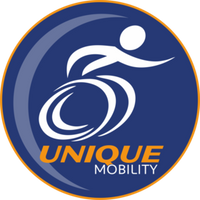Powered Wheelchair users have access to various functional positions, usually through the power seat functions. With so much available, it's not always easy to understand what options would benefit you. So, we've created this list of the most popular powered wheelchair seating functions.
Posterior Tilt
What is Posterior Tilt?
Tilt systems change seat angle orientation in relation to the ground, while maintaining the seat-to-back and seat-to-legrest angle.

Tilt is usually prescribed to enable weight shifting, by redistributing pressure away from the buttocks, especially the IT's (Ischial Tuberosities), to the back. Tilt provides a change in posture for users who cannot independently shift their body weight. Tilt also helps to promote good seating and alignment and can decrease the potential for postural deviations.
When using Tilt alone, it must be greater than around 25 defrees to achieve pressure relief and / or tissue perfusion at the ischial tuberosities.
Backrest Recline
Backrest recline allows users to change seat to back angle and maintain constant seat angle with respect to the ground.

Recline, when used alone, can increase shear but may provide reduction in pressure at the ischial tuberosities at angles greater than 90-100 degrees. The greatest reductions in pressure are seen when tilt and recline are used together, either at tilt of 35 degrees with recline at 100 degrees, or, tilt of 15-25 degrees with recline of 120 degrees. Greater angles of tilt and recline generally provide better pressure relief.
Anterior Tilt
Anterior tilt can provide exceptional benefits to wheelchair users both functionally and physiologically. Anterior Tilt is a forward tilt angle as opposed to backwards and is often used to improve functional reach. It also helps with the management of tone and abnormal reflexes and access under tables and surfaces.

For some individuals just a small change in the angle of orientation anteriorly can effectively manage tone and abnormal reflexes, which can often interfere with function. In addition, small amounts of anterior tilt lowers front seat-to-floor height and can be the difference between getting under a table/desk or being limited by the lower extremities.
Permobil offer Active Reach on their powerchairs which can have up to 45 Degrees of anterior tilt depending on the model. Click here to see their range.
Powered Seat Lift
Powered Seat Lift or Seat elevation can improve users independence and quality of life. Powered seat lift raises and lowers the height of the seat whilst keeping the user steady. Seat Lift can enable users to reach a top shelf in a supermarket, or, see over a service counter in a bakery for example. It also allows users to interact with their peers at eye level which can improve users' social skill and self confidence.

Transfers from wheelchairs to other surfaces, such as beds and chairs, can be much easier with the aid of an elevation system. The height of the wheelchair seat can be raised to match that of the surface that the user is moving to.
Elevating Leg Rests
Elevating leg rests allow users to change the angle of the legs and/or footrests relative to the seat, extending the knee. Some legrests are articulating, which means they lengthen while also extending the knee for a more comfortable position.

The pivot point of the elevating leg rests should be positioned as close to the knee joints as possible. Elevating leg rests can help with the management of lower limb oedema and / or pain associated with oedema. It can also help with pressure redistribution in combination with tilt and recline.
BodyNatural is a unique system from Permobil, designed to harmonise and combine the movements of the power seat functions to support the natural movements of the body.This is included in the elevating legrests and backrest and can help to optimise comfort and pressure distribution.
Unique Mobility offer free home demonstrations on powerchairs and have chairs that incorporate all of these functions, or, why not try them out in one of our assessment rooms. You can book an appointment by using our contact form, or by calling our Plymouth branch on 01752 546 222, or, our Launceston branch on 01566 774 030

